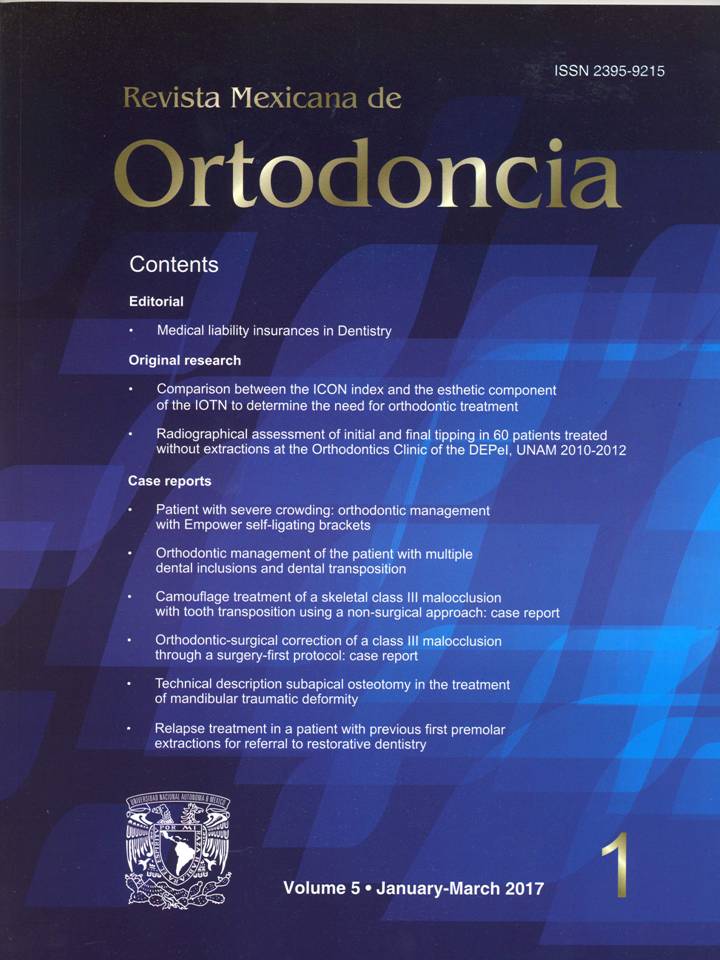Radiographical assessment of initial and final tipping in 60 patients treated without extractions at the Orthodontics Clinic of the DEPeI, UNAM 2010-2012
Contenido principal del artículo
Resumen
Tipping, mesiodistal root inclination, torque and in-out movements; they are information prescribed in the bracket. They locate the tooth in the three planes of space; it is thought that by filling the slot, expression of the prescription is obtained. Prescription provides specific measurements of tipping to distribute forces adequately on the long axis of the tooth thus resulting in treatment stability and health of the stomatognathic system. When these conditions are
not obtained, trauma might develop (widening of the periodontal space, root resorption, bone defects). Objective:To compare tipping expression before and during treatment as well as the trans-treatment tipping against the one established by MBT and Roth prescriptions. Methods: Pre and trans-treatment tipping was evaluated in panoramic radiographs (n = 60) from the angle formed by a baseline (infraorbital axis) and the long axis of the tooth in the upper arch, premolar to premolar. The comparison of the pre and
trans-treatment tipping was performed per tooth and per group (central, lateral, canines, premolars). Student’s T test and a onesample T test were used to compare the values obtained by group against the values of each prescription. Results: Trans-treatment tipping was affected in a negative way in most of the teeth; except in the canines, which are affected in a positive way (p < 0.05, in OD 15, 23, 24 and 25). The posterior left segment was the most affected in a negative way, with differences between 4-6o. The incisors maintained their pre-treatment tipping. With regard to the comparison of trans-treatment tipping for each prescription, it was observed that in no case the set value was obtained, with differences of 4-6o for central incisors and premolars and 8-11o for canines and lateral incisors (p < 0.05 in all groups with both techniques). Conclusion: Trans-treatment tipping is affected in a negative way in the posterior segment. The anterior sector is more stable, while the canines are favored with regard to the increase of distal tipping. In spite of the premise that pre-adjusted appliances optimize orthodontic treatment, human error or the clinician’s ability remains a relevant factor for success.
